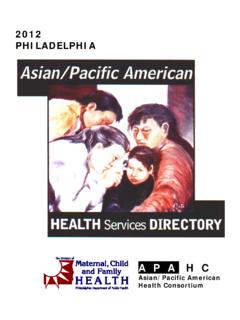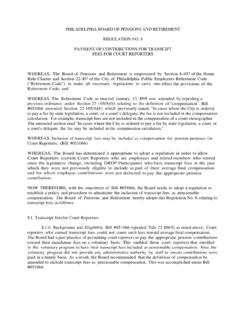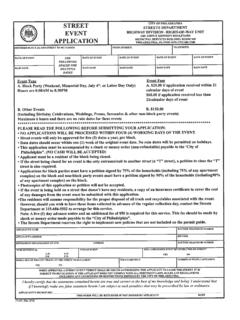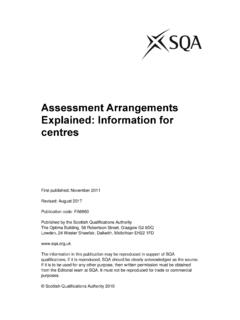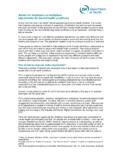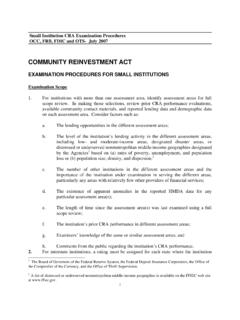Transcription of City of Philadelphia
1 City of Philadelphia Economic Impact Analysis of Proposed 10 Year Tax Abatement Adjustments (2018) Prepared by: Contact: Reginald Ross, Director - Econometrics Jones Lang LaSalle Americas, Inc. 330 Madison Avenue, 4th Floor New York, New York 10022 Phone: Email: Table of Contents 1. Introduction and Executive Summary 2. Existing Data Analysis 3. Model Overview 4. Modeled Results Appendix Appendix 2 2018 Jones Lang LaSalle IP, Inc. All rights reserved. The business activities of Jones Lang LaSalle, Incorporated are conducted directly and through its subsidiaries.
2 All information contained herein is from sources deemed reliable; however, no representation or warranty is made to the accuracy thereto City of Philadelphia Economic Impact assessment Section 1 1 Purpose of the Assignment and Executive Summary The City of Philadelphia retained the services of Jones Lang LaSalle to identify and quantify the economic impact of altering the terms of its ten-year property tax abatement program. The ten-year tax abatement program was designed to encourage the development or rehabilitation of real estate by exempting the value of the improvements from tax for ten The Kenney administration, with input from Council members, is interested in estimating the impact of various changes to the abatement on likely future development, City and School District tax revenue, as well as jobs through the use of historical data and analysis.
3 Our firm also had the privilege of working with the City on similar analysis 4 years ago. As such, in this report we will provide perspective relative to economic and capital market conditions from the previous report, where appropriate. To ensure that the impact of as many ideas for adjustment as possible have been estimated, or otherwise accounted for, the City has asked JLL to examine impact under the following 10 scenarios2: 1. Eliminating the abatement immediately 2. Eliminating only the School District portion (the 55% of Real Estate Taxes allotted for the School District) 3.
4 Limiting individual abatements to five years 4. Phasing out individual abatements after year five 5. Phasing out individual abatements starting year eight 6. Phasing out individual abatements at 10% per year, for ten years 7. Eliminating the School District portion of the abatement above the first $150 per residential square foot of value 8. Eliminating the School District portion of the abatement above the first $500,000 of value on residential new construction and rehabilitation 9. Only abating the initial value of construction while increases in values are not abated 10. Capping the abatement at $250,000 for residential properties and extend the term of the abatement (Analyzed separately as sensitivity discussion, would require state authorization) In order to address concerns that all geographic sections of the city haven t participated in the abatement program, to the study also considered: 1.
5 How spatial utilization of the abatement has occurred across the city s geography. 2. Approaches for adding a geographic requirement to abatement eligibility that could increase utilization in areas with limited investment. There are likely a myriad of other options to consider. However, we believe that the impact of most such options can be approximated from the above examined scenarios. 1 See Appendix 2 2 At the writing of this report, there is proposed legislation to add a 1% levy on new construction costs tax to generate revenue for the City s Housing Trust Fund.
6 Where possible, this study notes the potential impact of that proposed tax for each scenario examined to provide additional information for policy makers to consider. For comparison purposes, we model this impact as a simple increase in the present value cost of construction. Section 1 Introduction and Overview City of Philadelphia Economic Impact assessment Section 1 2 Executive Summary Due to national economic conditions and Philadelphia s positioning in Northeastern urban real estate markets, Philadelphia s economy and development volume3 have rebounded from the previous recession along with the national economy.
7 O The city s development volume has demonstrated the classic V shaped recession recovery pattern typical of stable, moderately space constrained economies. o Put another way, Philadelphia has come out of the recession at a very similar speed and trajectory to the course it took on the way in to recession. o This is in line with our modeled forecasts for the city s real estate development volume from 4 years ago. Using historical capital markets data, we can conclude that having the abatement in place over the past few years was a significant factor in the city s ability to recover at a similar pace as its peer group of Northeastern cities, and space constrained, major urban real estate markets4, from the last recession.
8 O The city was able to compete for a share of investment capital from off shore, national, and institutional sources, while becoming less reliant on local and regionally focused sources of funding. o The portion of national sources of liquidity funding transactions in the city increased by roughly 25% over pre-recession o These sources of liquidity would likely not have been available without the City offering investment yields, relative to risk, that were at least in line with historical norms and competitive with other major urban markets. Historical analysis suggests that had the abatement not been in place during the past economic recovery, a portion of Philadelphia s recent development volume would likely not have been attractive enough to initiate.
9 O However, the data suggests that the following statements are also true: Some higher end6 projects in the higher demand sections of the city would likely have been profitable enough to do with or without the abatement. The need for capital, that had been on the sidelines during the downturn, to be put to work when a sustained recovery was clear, even if yields were not ideal, would have driven some transactions. 3 For the purposes of this study, we define development volume as the number properties that have either been newly constructed or substantially renovated.
10 4 Markets with space constraint are considered structurally different from those without (eg. Houston, Dallas, some other Southwestern markets) because new demand can more rapidly be met by new supply, thus limiting significant price swings. 5 Source: Real Capital Analytics. It should also be noted that Philadelphia has yet to attract its share of national residential developers and is still largely dependent on local firms to fill that need. 6 We define higher end as high amenity, or luxury , projects where pricing to the end user is [10%-15%] above of the City s historical averages. City of Philadelphia Economic Impact assessment Section 1 3 General positivity of economic expectations during an economic recovery makes all markets participants less risk averse.

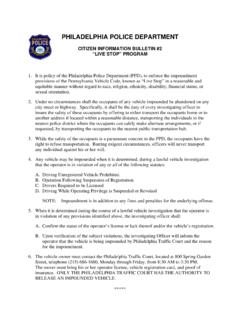


![[PSA] Philly: Classaction lawsuit brings changes in …](/cache/preview/1/4/c/8/8/d/5/c/thumb-14c88d5c5b2f1fee5e561fc7daceb397.jpg)


